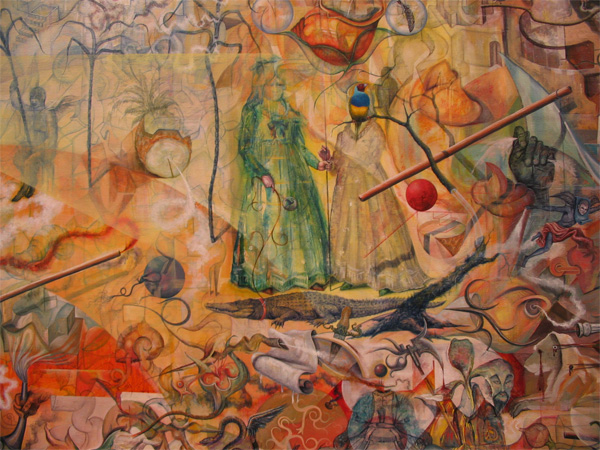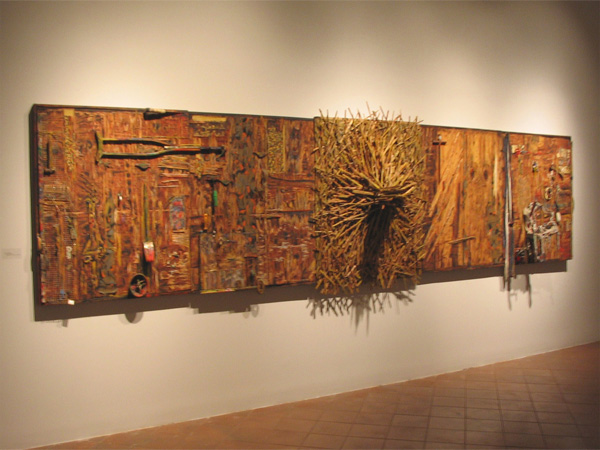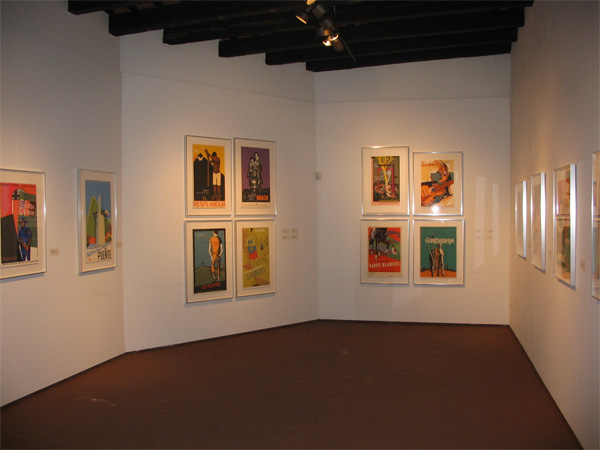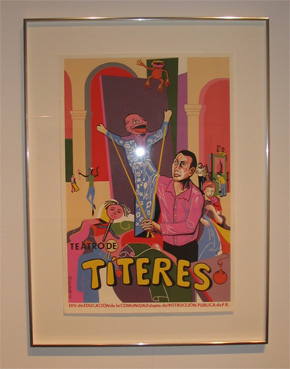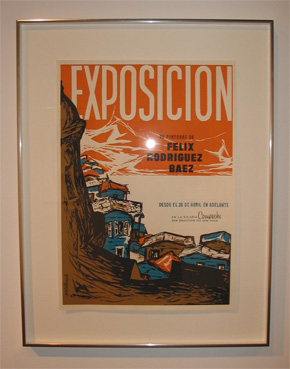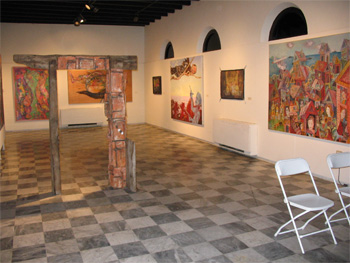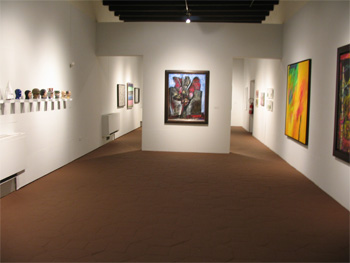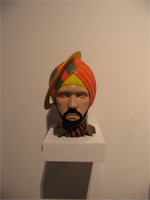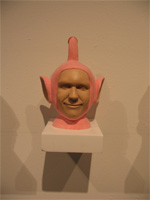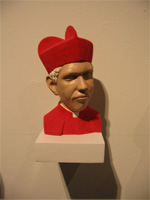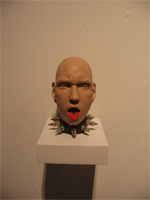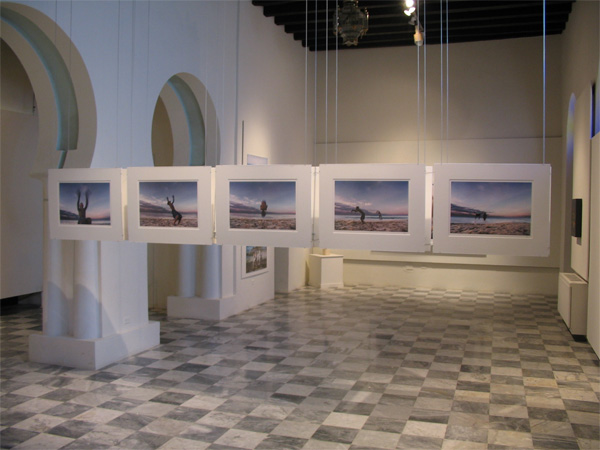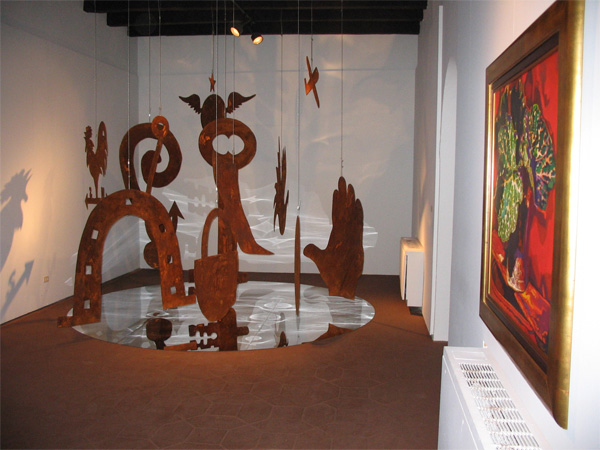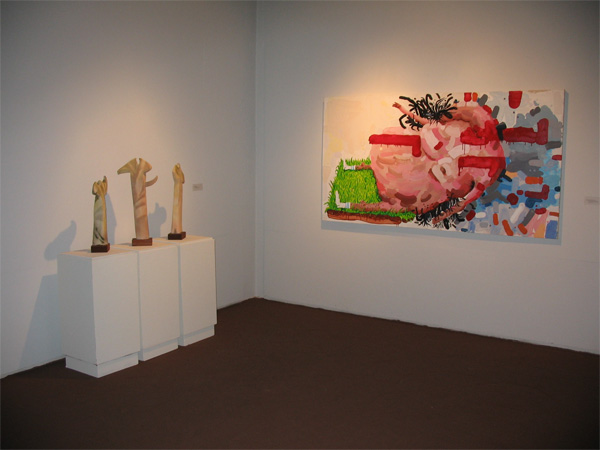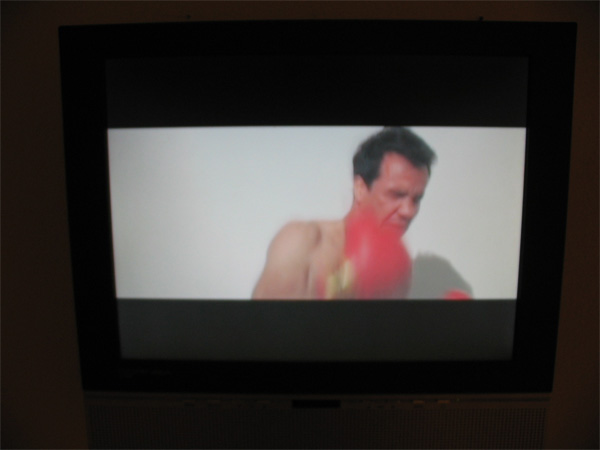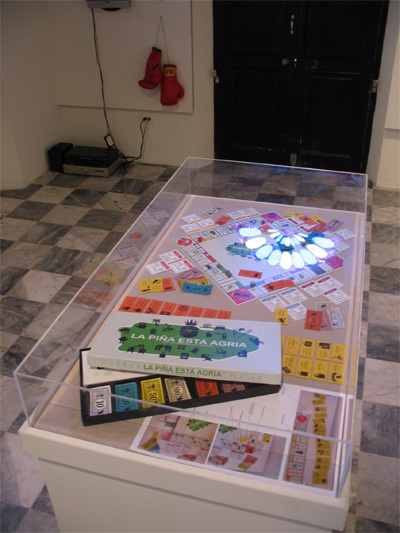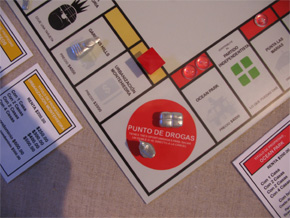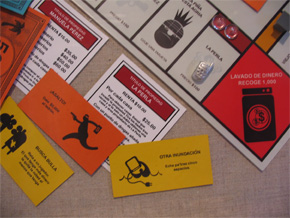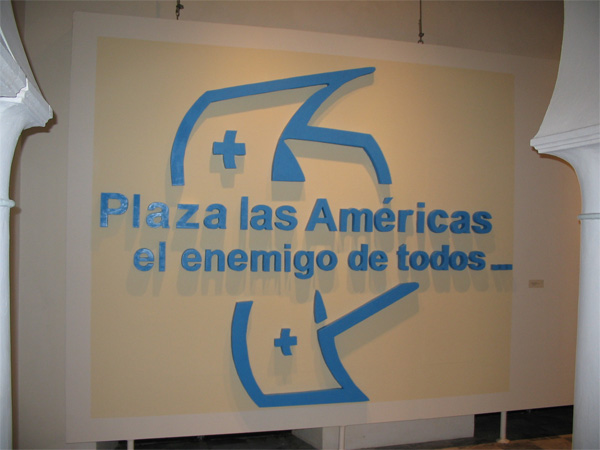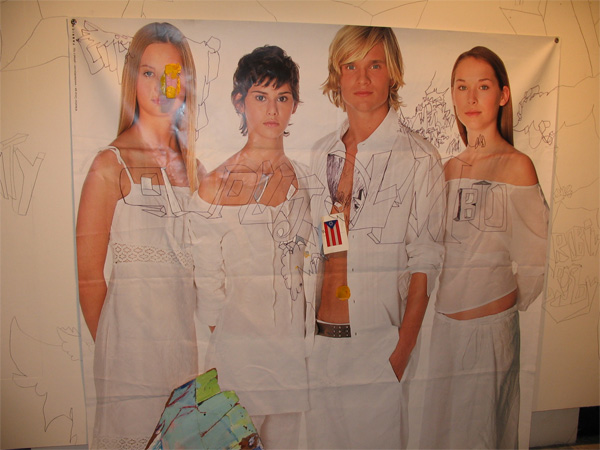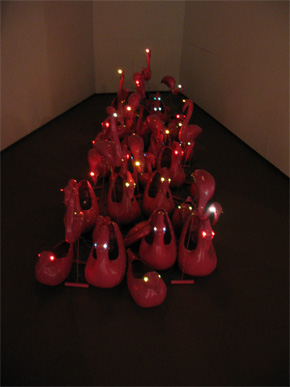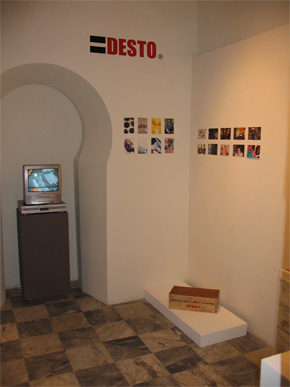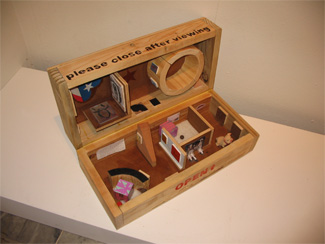|

La Muestra, If Ever There Was One
Now that our official duties are over, it’s time to get down and get funky with that Puerto Rican show of shows, that island art-o-rama, that object of our affection, La Muestra Nacional de Arte. We’d love to give you the full fifty-cent tour, but owing to the fact that there are works by one hundred twenty-seven artists crammed into La Muestra’s four multi-room salons, it probably behooves us to put a lid on it for once and let the exhibition do the talking. In fact, the following is but a tiny sampling. It hurts us more than it hurts you to admit how backwards, gauche, and downright spasmo Rotund World is in this snappy, fast-acess world of ours. There will be no virtual excursions, no YouTube-ready videos. You’re stuck with a thoroughly random sampling of Rotund snapshots of the show every boricua loves to hate. Though maybe not this year, and with good reason as you’ll see.
To put yourself in the proper frame of mind, it would hardly do to think of La Muestra Nacional as a well-oiled machine. But neither is it the breathtaking botch job at the end of a bumbling, hopelessly corrupt selection process that some people would have you believe it is. It more accurately resembles the detail from Rigoberto Quintana’s painting Había una vez, top, or Ramón Feliciano’s Autobiografía, above: a dizzying, improbable array that somehow manages to add up; though what, exactly, it adds up to no one can be sure. Have we taken the pulse of the nation, catered to the mob, or thrown the baby out with the bathwater? Is it six to one, half-a-dozen to the other? Dog eat dog or knick knack paddy wack? You be the judge. One way to take the measure of a “national” exhibition of contemporary art is to see where and how deeply it roots itself, and La Muestra Nacional de Arte 2005-2006 certainly did the right thing in that respect. This edition is dedicated to two artists, Antonio “Tony” Maldonado and Eduardo Vera Cortés, who helped make the Puerto Rican printmaking tradition among the finest, most socially committed in Latin America, especially through their work with the legendary División de Educación de la Comunidad, DIVEDCO.
Both artists died within the past year, and La Muestra Nacional mounted a small show of their posters. Above left is Vera Cortés’s “Teatro de Títeres” from 1978, and to the right is Maldonado’s exhibition poster for a 1959 painting show by Félix Rodríquez Báez. Elsewhere in the exhibition—nearby in fact—we offer glimpses of what things look like installation-wise. Below are shots of the salas that make the Old Arsenal at La Puntilla a dicey place to mount an art exhibition. You can make out Filipo C Tirado Medina’s jaunty “Para poder ser yo, tengo que ser otro” in the image to the right just below, and lest you think that Tirado Medina is making crude fun of cherished icons—George W. Bush as a penis-headed Tinky Winky?—the work’s title assures us that each decked-out noodle is a likeness of the artist himself (2005, plastic, wood, metal and latex, dimensions variable).
Underneath Tinky Winky and friends, in descending order: one half of Guillermo Real’s series of photographs, “Los voladores del último trolley,” 2005. There are ten prints, each 29" x 23". Next, to the left, Anaida Hernández’s metal, cor-ten, mirror, plexiglass, cable, and light installation “La sombra,” 2004-2006, dimensions variable. To its right, Francisco Rodón’s barely glimpsed 2005 oil and ink on paper “Hora verde.” Next, our fave juxtaposition in the entire exhibition: on the left, Sylvia Blanco’s “Germinados II (Tríptico),” 2005, earthenware sculptures, 18" x 23", and to the right, Roberto Marquéz’s “Everything happened in my mind and this fucking fatness didn’t help,” 2005, acrylic on canvas, 47" x 87".
From the top down: Carlos Reyes beats the crap out of himself in the three-minute (one round) video installation “Fallen,” 2006. Next, Carlos Aponte’s dark, boricua adaptation of Monopoly, “La piña está agria,” 2006, which includes gameboard, dice, and cards, dimensions variable; with two details below. Next, Quintín Rivera Toro’s swift uppercut to capitalist excess, “Plaza Las Américas, el enemigo de todos,” 2006, an 8' x 10' installation. Next, a detail from Pedro Vélez’s installation “Puerto Rican-Jewish,” 2006, collage, advertising banner, ink, paper, and wall drawing. Lastly, on the left, Melquíades Rosario Sastre’s “The Flock,” 2006, thermoplastic sculpture with lights and battery, dimensions variable, and on the right, a gallery within the gallery by the formidable =Desto crew, Omar Obdulio Peña Forty, Jason Mena, and Raquel Quijano, with works by several of the artists they have shown in the year-plus of their raucous existence. Come with us now to La Ballajá here. |


